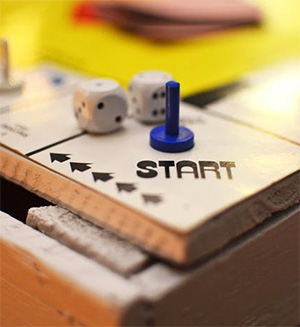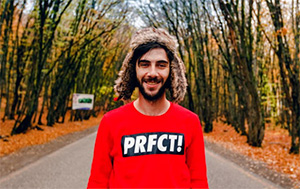 For many years, I’ve suffered from a deep internal conflict – I want to find all my media but I don’t want to do any work to find it. This has led me on a long, strange journey exploring a wide range of tools to manage media.
For many years, I’ve suffered from a deep internal conflict – I want to find all my media but I don’t want to do any work to find it. This has led me on a long, strange journey exploring a wide range of tools to manage media.
After many years of wandering, I’ve come to one depressing conclusion: As long as I don’t shoot any more media, I can find the media I’ve got. But, as soon as I shoot something new, I’m toast. Clearly, this is a solution that is not a solution.
My wife is a family history buff. Over the last decade she has acquired and scanned thousands of old photographs, personal letters and diaries. We use a naming convention consisting of the date of the document and the name of the person who created it. (For example, “19441116_Jordan, Dean” for my Dad’s letters home during WWII, when he was in Europe with the US Army.)
While this naming convention works when you want to read the letters sequentially, it’s a disaster if you are trying to find that specific letter where he talks about entering a bombed-out city. Worse, thin handwriting on yellowed paper does not easily lend itself to AI-based content recognition.
In other words, I’m gonna have to solve this myself.
THE PROBLEM IS US

Whether we work with video or still images, at some point, we’ll have more media than our unassisted brains can remember on their own. Like most of us, my first reaction is to say: “Um, yeah. Let me just finish this and I’ll solve it next week.”
I’ve been saying that for five years. For some reason, during all that time, this mess did not solve itself.
My desire to easily find what I’m looking for is one of the driving forces behind my continued interest in media asset management systems. I’ve looked at lots – from inexpensive utilities to massive enterprise systems. And, I’ve come to one inescapable conclusion:
Like a spreadsheet, an asset management system is only helpful
after you have meaningful data in it.
 LABELS ARE THE ANSWER
LABELS ARE THE ANSWER
The key to finding stuff is not your media, it’s meaningful labels about your media. (Techs call these labels “metadata,” but that word just intimidates me.) When it’s time to cook dinner, we can find the seasonings we need because they are labeled. (Paprika and cayenne may look the same from the outside but their contents are different. Labels prevent, um, surprises….) When it’s time to edit, in order to find the clips we need, they, too, need to be labeled.
The problem is that the labels that are most helpful are those that are specific to your project. I mean, when was the last time you searched for all the clips shot at f2.8? Or on a 50 mm lens? Right, never. This information is nice to know, but not meaningful.
Labeling requires thinking about what you are most likely to need to find, what system you should use to organize it, and when to allocate time to create the labels you will need to find it. In other words, before we can even start labeling, we need to do a whole lot of thinking – about boring stuff, like labeling media.
Sigh…
An easy way to solve this, of course, is to create small proxy images of your media. Then, you can quickly skim a page of images to find the one you want. That works, as long as all your images are different. It breaks down if I’m looking at 100 handwritten letters, or 25 shots of the same model taken one-thirtieth of a second apart. Or any talking head interview.
We can’t blame the developers. They know, even better than we do, that automatically-generated labels are only marginally useful. The twin keys to finding what we need are context and content. Speech-to-text transcripts are helpful because they are much easier to search than media files. And the technology behind speech-to-text improves weekly.
So, that’s part of the solution. But it doesn’t help for still images or video-only clips. There is an emerging field in AI, where computers are able to recognize people in a scene. While intriguing, this is still beyond my budget to either test or use. I’m hoping to learn more about this at NAB in April.
RETURN TO THE BEGINNING

Which brings me back to the beginning. Finding the files you need only works when you’ve labeled them. And labeling takes a lot of work.
Here at the office, I have seven RAIDs, plus a server; about 200 TB of online storage. As of this morning, just on the server, I have 1,056,545 assets to track. (One of the nice things about asset management software is that it is quite happy to tell you just how deep in the weeds you really are…) If I brought those RAIDs into the system, the asset count would probably double.
This reminds me, again, that acquiring assets is easy. You just scan another image, or press Record another time. Editing, too, is easy. You just find the clip you need and nestle it nicely into the timeline. The hard part is what happens between acquisition and editing. In that vast unknown territory, media, even entire projects, can get lost.
A million assets! Sheesh, that’s a lot!! If I labeled 500 a day, I’ll be 15 years dead before I finish. And that’s assuming I don’t shoot anything new – and we all know THAT’s not likely to happen.
In this situation, I have two sayings that I find very helpful:
* You can’t finish if you don’t start.
* It doesn’t have to be perfect, it just needs to be.
It is REALLY intimidating to think of labeling a million clips. So, don’t think of the total. Think of labeling just one folder. Then another. Then another. Pick the folders that have clips you need but don’t yet have memorized.
Even a few custom labels, applied consistently to our clips, is better than trying to create a perfect system and never starting.
When I was writing my books, or, even today, when I write a tutorial, I want it to be as good as it can be within the time and resources that I’m given. If I try to make it “perfect,” I’ll never finish. As you know, you can always make any project “just a bit better,” but deadlines or budget got in the way. We do the best we can with the time we have.
Just so in labeling media. Don’t try for perfection. Pick something simple and quick that focuses on context and content. Don’t get fancy until you get comfortable with the basics. For example, start with Location. Every media asset manager allows you to select a range of clips and apply the same label to them – select all the clips you shot in Rockport, MA, and label them.
Next, try Morning, Evening, Day, and Night. Again, you can select a range of clips and quickly apply labels to all of them.
Maybe the next is Scene, or Interview, or B-roll. Look for categories that can be applied to a range of clips. This way you can quickly label lots of clips without getting bogged down in the details of a single clip. Labels should help you narrow a search to a reasonable number of clips so that you can more easily find the one you need.
Don’t label your stock footage – most of the time, it will be faster and easier to go back to the web and do a new search. Instead, label the stuff that’s unique to you. No website can help you with that.
SUMMARY

Any system I create won’t be perfect. But, right now, I’m looking for hundreds of thousands of shots that I can’t find. Anything is better than that.
The key is to get started, focus on assets that are unique to you, and tackle them in groups. From there, you can expand in ways that are most helpful to you and your projects.
And, if I’m lucky, I’ll get this under control many years BEFORE I’m dead. All I need to do is start.
6 Responses to Into The Heart of Darkness – Find Your Media
There are a lot of folks in our same situation. I use the same folder naming convention your wife does. I realized how weak it is when I switched to a Mac and started using the Photos app. When I take the time to add keywords, it is a powerful tool. But boy is that gonna be a lot of work. I don’t think there’s any shortcuts to eating that elephant one bite at a time. Like you say, at least make a decent first pass.
Mark, since you brought up Apple’s Photo App I’m assuming the OS X version. Somewhere along the line Apple added face recognition and that has happen me tremendously. Of course you do have to help it along with a bit of training. So when it asks “Who Is This?” I pick from a list of names that I have already entered or a new name.That process has located friends in pictures that I have going all the way back to the 80’s. With more and more of my pictures coming from smart phones with location data I can find pictures based on Where the picture was taken along with WHEN the picture was taken. I found it easy to select a group of old pictures and assign them a location..
That’s my 2¢
-Regards-
-Ray-
After my most recent experience with a hard drive (external) dying, I had to search for a lot of stuff that had been packaged in retrievable form on that drive. Without that packaging, I found myself in that debilitating “Heart of Darkness,” searching decades of photo and video folders for important items that are only numbered files in those folders. I am now following the same philosophy that you invoke — something beats nothing. But, oh, the time and frustration!
Kevin:
Oh…. I am SO sorry. That is SUCH a mess.
My sympathy!
Larry
Hi Larry,
I’m wondering how things are going with your media labeling project almost a year later.
Steven:
Still in the weeds. Sigh…
Larry